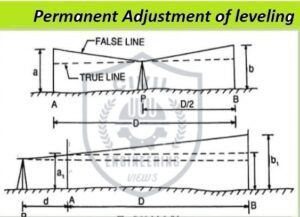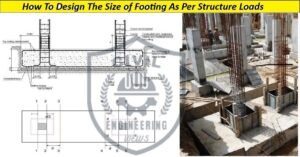What is The Types of Test For Construction Materials
Construction materials play a pivotal role in the integrity, safety, and durability of buildings and infrastructure. Ensuring the quality and reliability of these materials is crucial to maintaining standards and meeting regulatory requirements. What is The Types of Test For Construction Materials
Types of Tests For Construction Materials
Various types of tests are conducted on construction materials to assess their properties and suitability for specific applications. This article explores different categories of tests performed on construction materials, highlighting their importance and methodologies. By conducting thorough testing and analysis, engineers and constructors can confidently select and use materials that enhance the safety, durability, and sustainability of built environments
1. Mechanical Tests For Construction Materials
Mechanical tests evaluate the physical properties of construction materials under different loading conditions. These tests help determine the material’s strength, stiffness, elasticity, and toughness. Common mechanical tests include:
Tensile Strength Test Measures the maximum tension a material can withstand before breaking. It is crucial for materials like steel, concrete, and composites.
Compressive Strength Test Determines the ability of a material to withstand axially directed pushing forces. It is vital for assessing concrete, masonry, and rock materials.
Flexural Strength Test Evaluates a material’s resistance to bending. It is essential for materials used in beams, slabs, and other structural elements.

2. Chemical Tests For Construction Materials
Chemical tests analyze the chemical composition of construction materials and assess their resistance to chemical reactions and environmental exposure. These tests are crucial for materials such as cement, aggregates, and metals. Key chemical tests include:
Chemical Composition Analysis Determines the elemental composition of materials using techniques like X-ray fluorescence (XRF) and atomic absorption spectroscopy (AAS).
Alkali-Silica Reaction Test Identifies potential reactions between alkalis in cement and reactive silica in aggregates, which can cause concrete degradation over time.
Corrosion Resistance Test Evaluates the susceptibility of metals to corrosion in different environments, ensuring long-term durability.
3. Durability Tests For Construction Materials
Durability tests assess how construction materials perform over time under various environmental conditions, including moisture, temperature changes, and exposure to chemicals. These tests help predict the material’s lifespan and maintenance requirements. Examples include:
Freeze-Thaw Resistance Test Measures a material’s ability to withstand repeated cycles of freezing and thawing without significant damage. It is critical for concrete, asphalt, and masonry products.
Abrasion Resistance Test Determines a material’s resistance to surface wear and erosion due to mechanical action. It is important for pavements, flooring materials, and concrete surfaces.
Weathering Test Evaluates how materials degrade when exposed to sunlight, rain, and atmospheric pollutants, ensuring they maintain their structural integrity over time.

4. Physical Tests For Construction Materials
Physical tests examine the intrinsic physical properties of construction materials, such as density, porosity, moisture content, and thermal conductivity. These tests help assess the material’s suitability for specific applications and its behavior under different environmental conditions. Key physical tests include:
Density Test Measures the mass per unit volume of a material, which is critical for determining its weight and volume in construction.
Porosity Test Evaluates the amount of void spaces within a material, influencing its permeability and susceptibility to moisture penetration.
Thermal Conductivity Test Determines how well a material conducts heat, essential for selecting insulation materials and evaluating energy efficiency.

5 (NDT) Non-Destructive Tests
Non-destructive tests assess the properties of construction materials without causing damage, making them suitable for evaluating in-service structures and components. NDT techniques include:
(UT) Ultrasonic Testing Uses high-frequency sound waves to detect internal flaws and measure material thickness in metals and composites.
(RT) Radiographic Testing Involves using X-rays or gamma rays to inspect welds and detect internal defects in materials like steel and concrete.
(ERT) Electrical Resistivity Test Measures the ability of a material to resist the passage of electric currents, useful for assessing concrete quality and corrosion potential.

A wide range of tests are conducted on construction materials to ensure they meet quality standards, regulatory requirements, and performance expectations. From mechanical and chemical tests to durability assessments and non-destructive testing techniques, each type of test plays a crucial role in verifying the properties and performance of materials used in construction.
Related Post
-
What is The Permanent Adjustment of Leveling
-
Costing And Estimation Methods in Civil Engineering
-
Bending Moment And Shear Force in RCC Column Beam And Slab
-
How To Calculate The Anchor Bolt For The Octagonal Foundation











